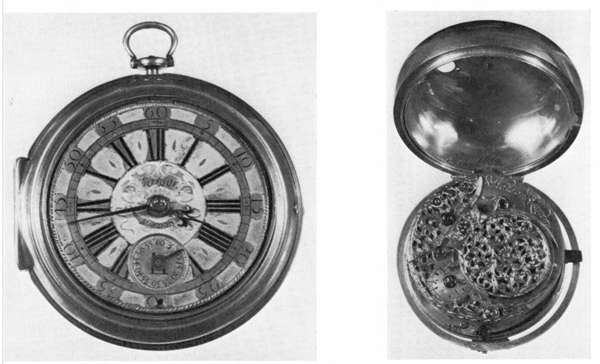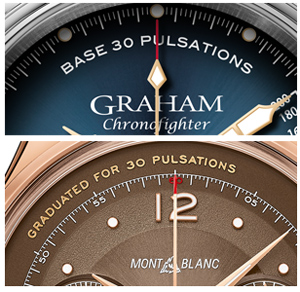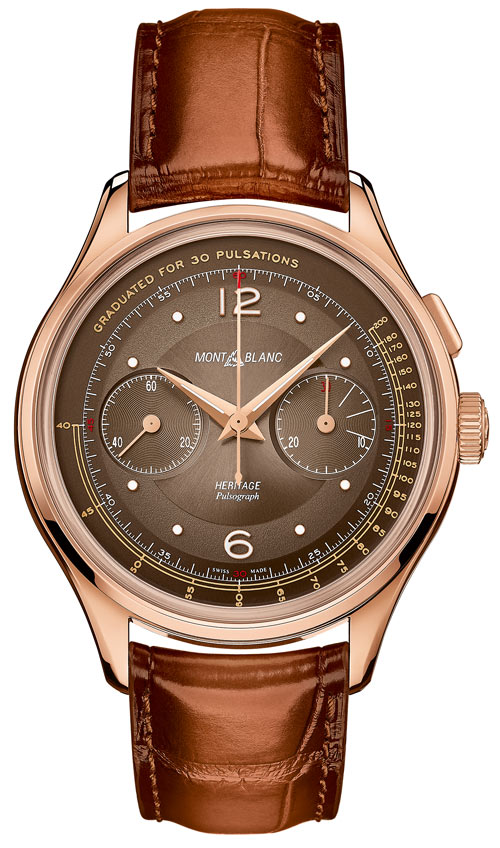In 2020, when every smartwatch and fitness monitor can tell you your heart rate, why in the world would you buy a mechanical watch with a pulsometer? It can’t show your current heart rate spontaneously, alert you if your heart rate becomes too high or too weak, or send you a notification in the event of arrhythmia. It can’t save your life, like some smartwatches apparently have.
1707, the Physician’s Pulse Watch
And yet, in 2020, watch brands continue to offer watches with pulsometers. Watchmaking history records that this complication dates back to the start of the 18th century, when two Englishmen came up with the idea. Doctor John Floyer and watchmaker Samuel Watson joined forces to create the Physician’s Pulse Watch, an instrument that could calculate a patient’s heart rate by use of a graduated dial. By the mid-19th century, physicians had access to sphygmographs (or pulsographs) to record patients’ heart rates, but pulsometer watches continued to be very popular with doctors in the 18th and 19th centuries, because they were more practical and easier to use.

And that’s their main advantage. At the time, they met a genuine need of the medical profession to be able to easily calculate a patient’s heart rate, by simply taking their pulse, and reading the result off the dial. These appropriately named “doctors’ watches” were as useful to the medical profession as pilots’ watches were to aviation pioneers in the era of astronomical navigation.
A particular chronograph
By pure coincidence, Graham and Montblanc unveiled their latest pulsometer watches – the Graham Chronofighter Pulsometer Ltd. and the Montblanc Heritage Manufacture Pulsograph Limited Edition – just a few weeks apart.
They are both chronographs, because that’s the complication needed to calculate heart rate. They both feature a graduated scale from 40 to 200, located between the 2 and 9 o’clock positions, which represents the number of heart beats per minute; and they also both work on the basis of 30 beats (60 beats for Watson's Pulse Watch)

In practical terms, to calculate heart rate, you take the pulse with your spare hand and engage the chronograph while counting 30 beats. After 30 beats, you stop the chronograph, and the hand indicates the number of beats per minute on the graduated scale.
This is how both watches work. Aesthetically, however, they are very different.
Graham Chronofighter Vintage Pulsometer Ltd

The Graham Pulsometer is a chunky 44 mm sports watch in steel with a sunray blue dial (previous versions came with silvered and black dials). But it doesn’t look like a chronograph, because it doesn’t have the two traditional subdials. The chronograph function is primarily devoted to the pulsometer, via its central second hand. Further evidence of the pre-eminence of the pulsometer on this original model is supplied by the fact that the hours are discreetly indicated by dots, and the small seconds counter is completely blank. Apart from the pulsometer markings, the only other figures visible on the dial are the date and limited edition numbers. As with all Chronofighters, the crown with its impressive protection lever and the chronograph pusher are located on the left. The Calibre G1718 can be seen through the sapphire caseback. It beats at 28,800 vph, providing a power reserve of 48 hours.
Montblanc Heritage Manufacture Pulsograph Limited Edition

The Montblanc Heritage Manufacture Pulsograph Limited Edition marries the deliciously old-fashioned pulsometer with an elegantly refined and unapologetically vintage design featuring an 18K rose gold case, tobacco-coloured dial and sfumato strap. Classic elegance is the order of the day, with the two traditional chronograph counters, dauphine hands, railroad minutes track, domed dial and grained chapter ring. Inside, classical styling gives way to heritage and the weight of history. The Calibre MB.13.21 is a descendant of the famous Minerva 13.20, the first hand-wound monopusher chronograph movement, which cemented the reputation of Minerva chronographs in the 1920s and 30s, and whose main features it reproduces. The Calibre 13.21 is a beautiful movement, whose finishes can be admired through the sapphire caseback.
So, why buy a pulsometer watch? Even if this function is rarely used (and, honestly, how many people regularly use their chronographs or tachymetric scales?) it’s a historic watch complication that deserves to be remembered. The display leads to some original dial layouts, and its old-fashioned vibe fits well with the vintage-inspired zeitgeist.






